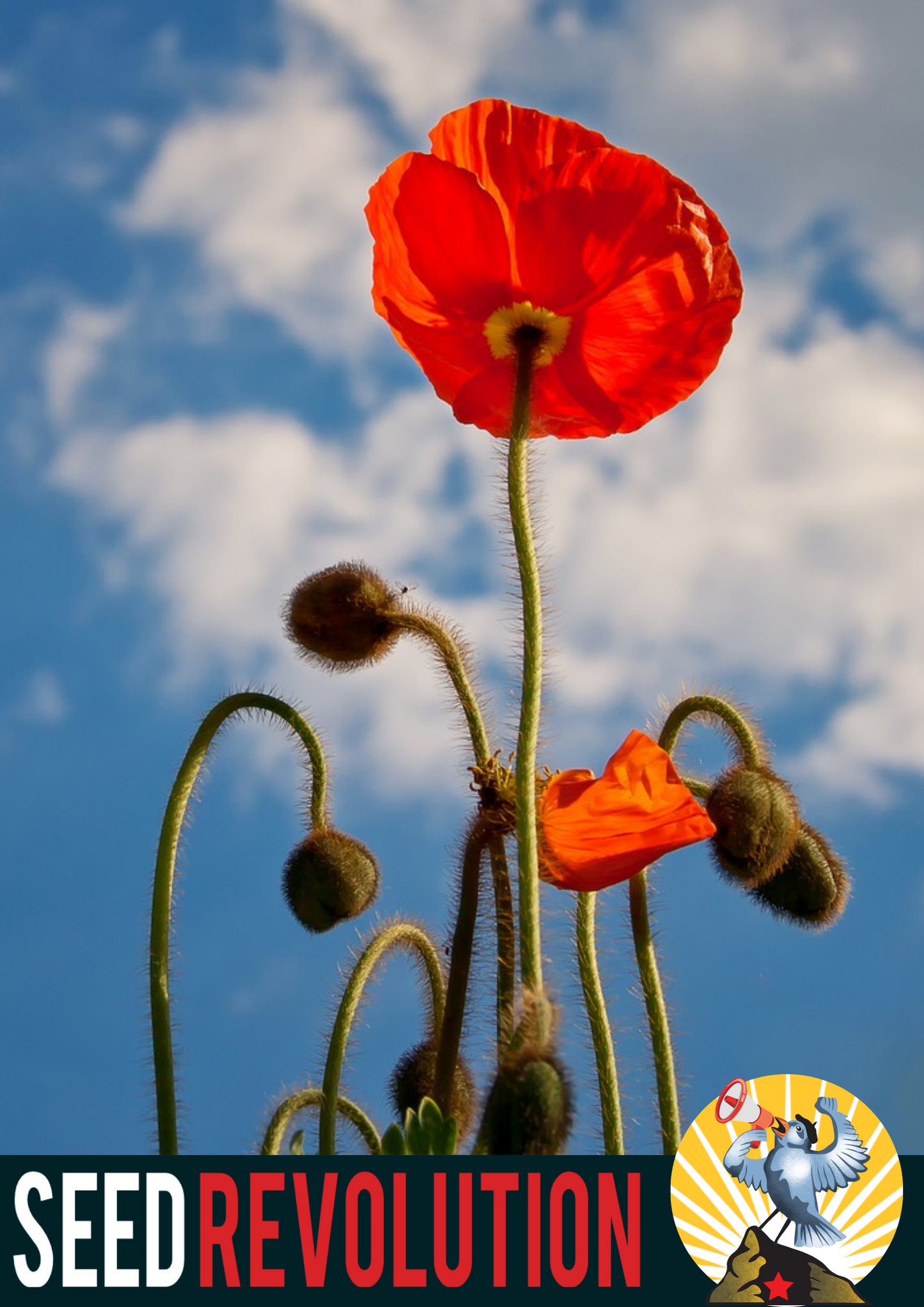My Store
Field Poppy Wildflower Seeds
Field Poppy Wildflower Seeds
Couldn't load pickup availability
Papaver rhoeas
Other names: common poppy, Flanders poppy, red poppy, headache
Possibly the most recognised wild flower there is, the common poppy is more than just a spectacular habitat for pollinators. It’s a cultural symbol of freedom and remembrance. An iconic flower for any garden.
Poppies grew on the battlefields of France and Belgium after the ground had been severely churned up from the chaos and explosions of trench warfare. If you want to create the ideal habitat for poppies to grow. Think of Flanders fields. Churned up and arid. Growing poppies really is that easy.
How to Plant
Cheap and Easy Method:
For a quick and cost-effective approach, simply scatter the seeds directly onto bare soil. This method requires minimal preparation but has a lower success rate as it heavily relies on natural conditions being favourable. Clear the area of any debris and lightly rake the soil to create a loose surface. Evenly broadcast the seeds across the soil, then lightly rake again to ensure good seed-to-soil contact. This method can also be done in a pot or growing box, making it versatile for various settings.
More Involved Method:
For better results, especially in areas with aggressive weeds or where the soil may be particularly challenging, consider using a terram membrane. This method involves laying a terram membrane over the planting area to suppress unwanted vegetation. Over this membrane, add a layer of soil that is suitable for poppy growth. Sow the seeds evenly across the soil surface and gently press them in to ensure good contact. This method, while more expensive and labour-intensive, greatly enhances the likelihood of establishing a vibrant and sustainable poppy display.
When to Plant
The optimal time to plant your Field Poppy Seeds is in the autumn (September to November) or early spring (March to May). These periods offer the best temperatures and adequate moisture levels for seed germination and root establishment.
Where to Plant
Field Poppies thrive in well-drained soil and full sunlight. Choose a location that receives at least six hours of direct sunlight per day. Avoid areas that are prone to waterlogging, as this can hinder seed germination and plant growth.
Watering Schedule
During the initial establishment phase, maintain a consistent moisture level in the soil, keeping it moist but not waterlogged. Water the seeds gently to avoid washing them away. Once the plants are established, they typically require minimal watering, relying on natural rainfall. However, during prolonged dry spells, occasional watering may be necessary to maintain healthy growth.
Blooming Period
Field Poppies will generally bloom from late spring through early summer, approximately from May to July. The exact timing can vary based on regional climate specifics and yearly weather variations.
Expected Plant Height
Field Poppies typically grow to a height of 30 cm to 60 cm. This variation creates a textured, dynamic appearance that provides depth and interest, while also supporting a diverse range of wildlife and pollinators.
Summary of Planting Methods
Cheap and Simple Method:
- Scatter seeds directly onto bare soil or in pots/growing boxes.
- Lightly rake the soil before and after scattering seeds.
- Suitable for small and large areas.
More Involved Method:
- Use a terram membrane to suppress weeds.
- Add a suitable soil layer over the membrane.
- Sow seeds and press them in gently.
- More labour-intensive but higher success rate.
No Grow No Fee
Minimum of 2 years post sowing before claim can be made.
Share






